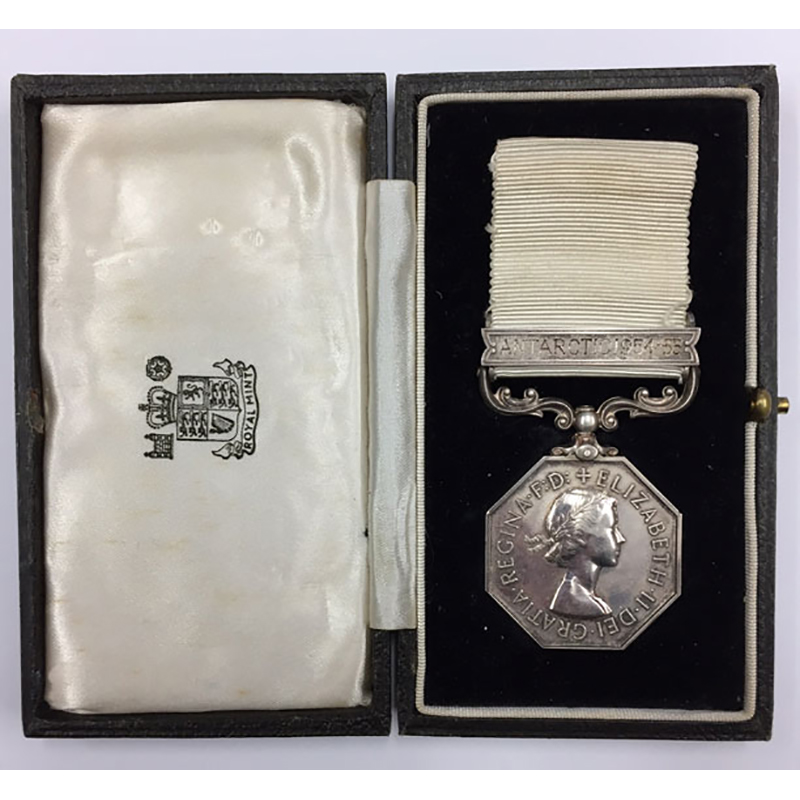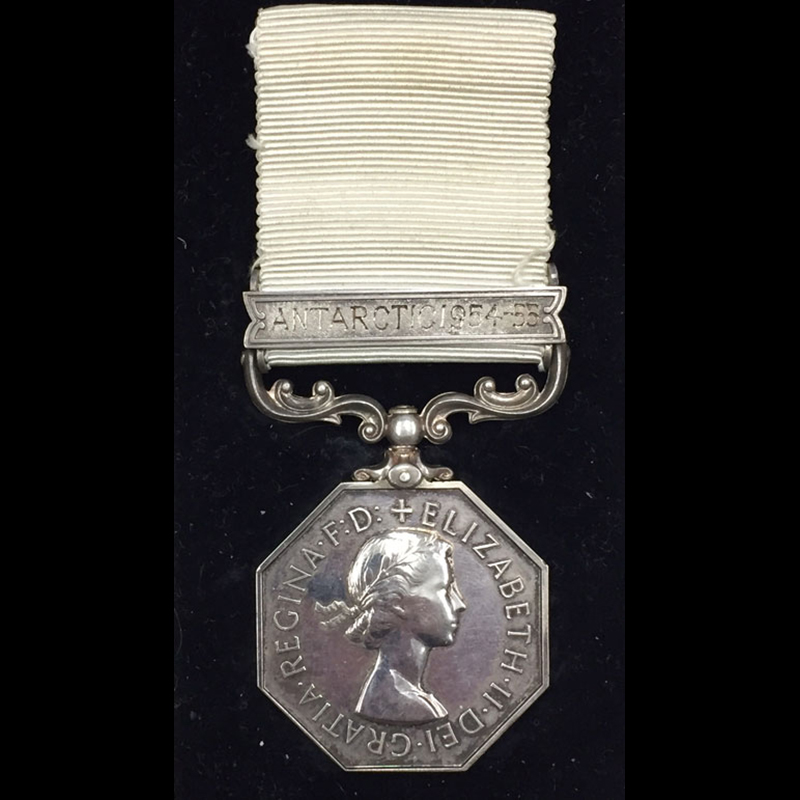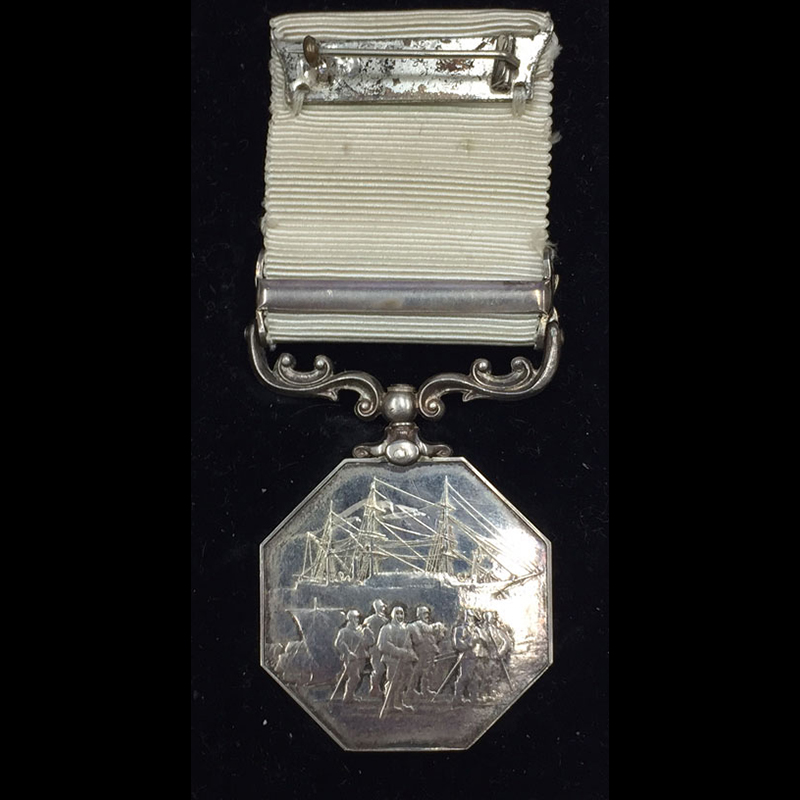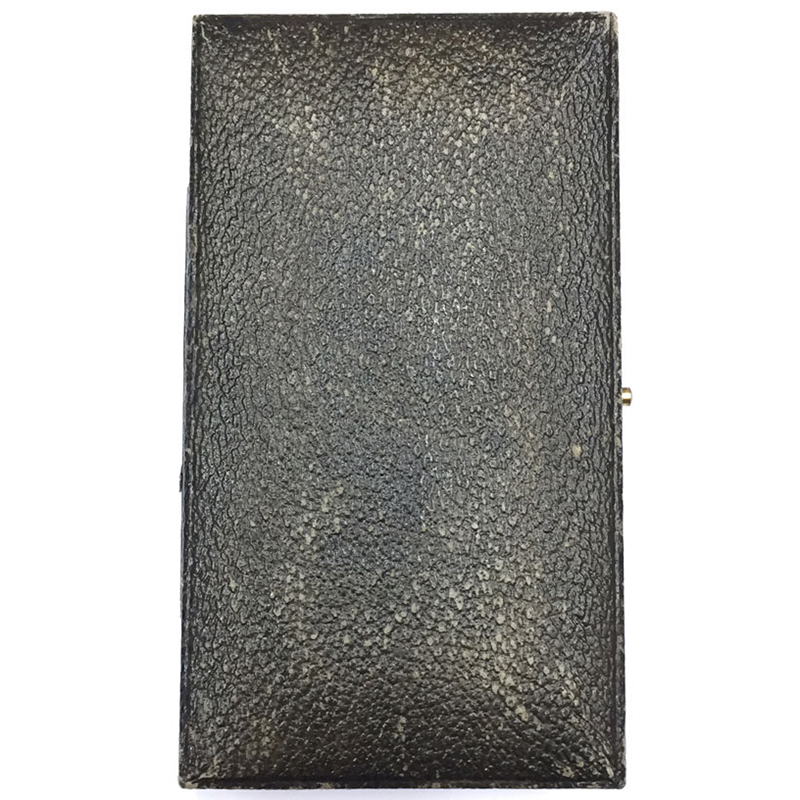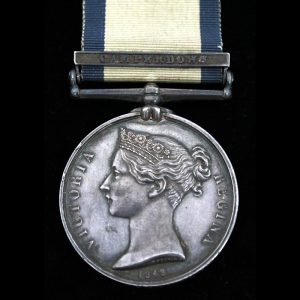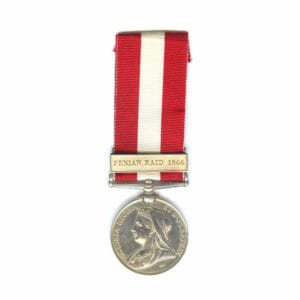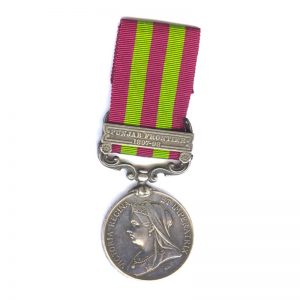Description
Polar Medal, bar Antarctic 1954-55, EIIR, Robert Julian Fausitt Taylor, Sledge Dog Physiologist at Hope Bay from 1954-55, took part in 8 Sledge Journeys involving 248 Days in the field, traversing nearly 2150 miles.
Medal officially named on the rim and in original Royal Mint case of issue.
He was born on 21st June 1929, He usually went by his middle name of Julian. He was first educated at Oundle School in Northamptonshire.
On 21st August 1948 During his National Service he was made 2nd Lieutenant from Cadet.
After his service he continued his education at Trinity College, Cambridge University, gaining his Bachelor of Arts in 1952, followed by his Master of Arts in 1953.
He was then invested as a Fellow in the Royal Geographical Society and
also a member of the British Ornithological Society.
Following his studies at the age of 24 he joined the Falkland Islands Dependencies Survey from 1953 until 1956, the new name for the Post War Operation Tabarin later known as the British Antarctic Survey.
He worked alongside Alan Precious and Ron Mottershead, he studied the Dogs Diets, work output and breeding, after a year of consistent travel with the dogs he gained a ground breaking insight into the Dog’s Stimuli in the weather conditions.
There were 75 dogs at Hope Bay, they originated from Labradors, bred about 10 years before he arrived.
He chose 9 of the best dogs and went on a Sled Journey to the coldest depths of Antarctica covering over 900 miles taking at minimum three months.
As an expert in Nutrition he began to assess the dogs’ performance with seal meat and the standard dog food nicknamed ‘Bovril’ which had been used on canine sledging rations on British Expeditions since 1930.
Robert instead introduced a new diet, with higher fat and carbohydrate content, with less protein.
12 Tonnes of the new dog ration were shipped to the Falkland Island Dependencies in the Autumn of 1956.
As Robert journeyed to outposts that were increasingly remote, he and the dogs suffered as temperatures dropped and winds lifted.
Each time a single degree Fahrenheit was lost, the bodies of the dogs would have to work 0.3% harder to maintain their pace. However there were still inconsistencies that confused Robert, even when he tested the dogs’ pulling power electronically on the flattest sheets of ice.
He had a breakthrough, whilst going through the toughest periods of endurance he had encountered, in the most trying places on earth.
He suddenly sparked a ‘Eureka’ moment when the miles and miles of featureless icy terrain were suddenly burst by a jagged glacier on the horizon. Up until this point, Robert had seen the dogs as just a mechanical engine to his sled and had not considered they might become bored and lose motivation.
Like himself, travelling on the dreary ice in terribly cold temperatures, the psychology of him and the dogs was being affected.
He realised that changes on the environment with visual objectives produced a spark. He concluded that mental distraction was more important than even muscle strength or physical fitness.
Will power and hope were the most important factors to staying strong in the worst of conditions.
The “Taylor Nunataks” two 650m Nunataks isolated on the far end of the Joinville Island, were surveyed by Robert Taylor in 1953, and were named after him by the United Kingdom Antarctic Place-Names Committee.
Another story of the Trio during their time in Antarctica, when they had to rig up some way to collect the dogs urine which as it turned out was more difficult than you would think;
“Ron Mottershead and I built – I don’t know what you would call it – A dog’s Urinal.
we did it with sheet metal, a sort of big square funnel with a grid on top and the dogs were supposed to stand on the grid and do a wee wee, which would be collected underneath in a suitable vessel. Only the dogs wouldn’t cooperate… No and you complained bitterly when I boiled the faecess… So the next thing was to hand around with a bucket of some kind and when they cocked their leg up at the base of the hut you collected it as it came out, and gave it to Julian.”
His Mother was also present at Hope Bay, at a similar period to Julian, “The Mother of Julian Taylor, who was based at Hope Bay, sent down a case of the new Cordial called ‘Ribena’ to each of the bases for the same reason
